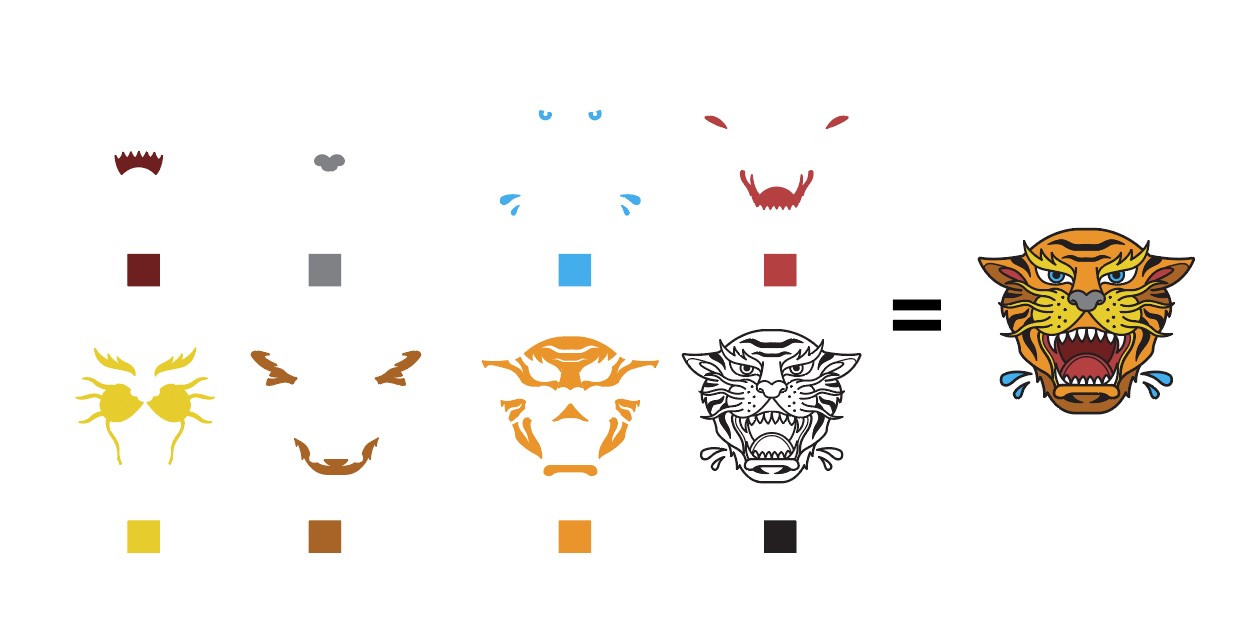The browser you are using is not supported. Please consider using a modern browser.

The Art, Design, and Separation Process in Screen Printing
The Art, Design, and Separation Process in Screen Printing

Screen Printing Art and Design Separation Process:
Screen printing is an incredibly versatile art form that combines creativity and precision. Whether you’re designing custom t-shirts or detailed prints, understanding the art, design, and separation process is essential for achieving high-quality results. From initial sketches to perfecting the color separations, this process is critical to creating professional, vibrant designs.
The Role of Art and Design Separation in Screen Printing
Before anything can be printed, the artwork itself is the foundation of the entire screen printing process. This is where creativity comes to life. The design you create must be prepared in a way that is compatible with the screen printing technique. The key challenge here is ensuring that each design layer can be separated for individual screen preparation.
Designing for Screen Printing
When designing for screen printing, it’s important to remember that each color in your design will require a separate screen. Therefore, it’s crucial to create artwork with clear, defined shapes and colors that can be easily broken down into individual layers.
Here are a few tips for creating screen printing designs:
- Use vector-based software: Programs like Adobe Illustrator allow you to create scalable designs without losing quality.
- Limit your color palette: Since each color requires a separate screen, minimizing the number of colors can simplify the process.
- Plan for halftones: For more intricate designs, using halftones (small dots of varying sizes) can add depth and detail without needing multiple colors.
The Importance of Color Separation
Once your design is finalized, the next step is color separation. This process involves breaking your design into individual layers—one for each color. The goal is to create distinct layers that can be printed one at a time, using different screens.
What Is Color Separation?
Color separation is the method used to divide a multi-color design into individual components. Each color gets its own stencil, allowing the ink to pass through only where it is needed. Depending on the complexity of the design, color separation can range from simple (for two or three colors) to highly intricate (for detailed, multi-colored designs).
Techniques for Color Separation
To achieve perfect results, the color separation process involves using specialized software, like Adobe Photoshop or dedicated separation programs like Separation Studio. These programs break down the design based on the colors, providing separate files for each screen.
Some common separation techniques include:
- Spot Color Separation: Each solid color in the design is isolated and given its own layer.
- CMYK Separation: Used for full-color photographic designs, this process breaks the image into Cyan, Magenta, Yellow, and Black layers, similar to traditional printing.
- Simulated Process Separation: Often used for complex designs on dark fabrics, this method mimics full-color designs using only a few colors through halftones and shading.
Preparing Screens for Each Layer
Once you have separated the colors in your design, it’s time to transfer each layer onto individual screens. Each screen will only allow one color of ink to pass through, so aligning the screens correctly is vital for ensuring that the colors come together to form the final design.
Screen Setup
Here are the steps for preparing your screens:
- Create a stencil for each color: Use your separated design layers to make stencils, either through emulsion exposure or pre-cut materials.
- Align the screens: Proper registration (alignment) ensures that the colors fit together perfectly.
- Test prints: Before proceeding with mass production, run test prints to confirm that each layer is aligned and that the colors are printing as intended.
Achieving Professional Results
The art, design, and separation process is one of the most crucial aspects of successful screen printing. Whether you’re printing on paper, fabric, or other materials, understanding how to design for the medium and separate colors properly will ensure you get professional, vibrant results every time.
FAQs
What is color separation in screen printing?
Color separation involves dividing a multi-color design into individual layers, one for each color, which can then be printed separately.
How many screens do I need for a multi-color design?
You need one screen per color. For example, a four-color design would require four screens.
Can I use halftones in my screen printing designs?
Yes, halftones are a great way to add shading and depth to your designs without using additional colors.
What software is best for design separation?
Adobe Illustrator and Photoshop are commonly used for vector designs and color separation, but specialized software like Separation Studio can simplify the process for more complex designs.
Is color separation difficult for beginners?
Color separation can be challenging, especially for detailed or multi-color designs. However, with the right software and practice, it becomes more manageable.
Why is registration important in screen printing?
Registration ensures that each layer of your design aligns perfectly during printing, preventing blurred or misaligned colors.
Check out how more tips on how to send your artwork to screen printers. Click Here!
Social Media
Check us out on Instagram
Like us on Facebook
Check in on LinkedIn